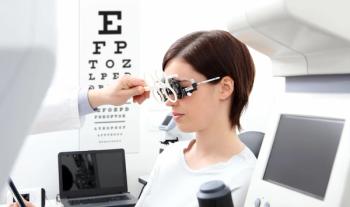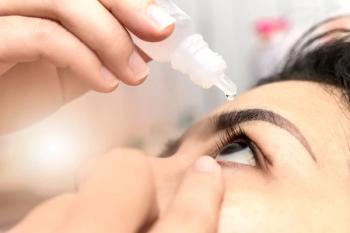
New use for autorefractors?
In the future, a standard autorefractor may become useful as a diagnostic tool to screen for contact lens complications.
Baltimore-In the future, a standard autorefractor may become useful as a diagnostic tool to screen for contact lens (CL) complications, said Valerie Seligson, OD, recently. Dr. Seligson is instructor of ophthalmology, The Wilmer Eye Institute at Johns Hopkins University here, and past director of CL services, Kaiser-Permanente, Washington, DC.
How patients were evaluated
"This makes sense because these people don't like to wear glasses and are dependent on their contacts," she said. "Screening would be another way to add a piece to the puzzle in making our diagnostic and therapeutic decisions in such patients a little easier."
The autorefractor is a computer that measures how light is changed as it enters the eye, and is used to provide an objective measurement of a patient's refractive error.
"It is quick, simple, and painless. Most ODs have one in their office, and the measurements are usually performed by a technician," Dr. Seligson said, adding that the autorefractor confidence score (AR score) helps determine the validity of the refractive error, but is also a measure of light intensity.
"On the NIDEK, as an example, the value of 9 represents a very reliable refraction. The scale is from 9 (reliable) to 5 (not a valid finding)," she explained. "A decrease in the signal strength (a low score) can indicate CL distortion, filming, or deposits, an opacity on either the lens or the cornea. It is a possible red flag for patients with no symptoms."
A different application
Dr. Seligson and colleagues at Johns Hopkins conducted a pilot study in which they used the autorefractor to evaluate complications in soft CL wearers. They included 40 consecutive patients who came in for a routine exam and were wearing their soft contacts.
The AR score was correlated with the subject's best-corrected visual acuity (BCVA) with contact lenses, BCVA with manifest refraction, subjective comfort, and slit-lamp exam.
Thirty-six of these 40 patients scored a 9 on the autorefractor, and had no CL issues. Two of the 40 scored a 9 but had problems, including red eye with infection, contact lens overwear with injection, and superficial punctate keratitis.
Two of the 40 had definite decreased vision with slight irritation and redness. Both patients scored a 6 for AR confidence.
Newsletter
Want more insights like this? Subscribe to Optometry Times and get clinical pearls and practice tips delivered straight to your inbox.
















































.png)


